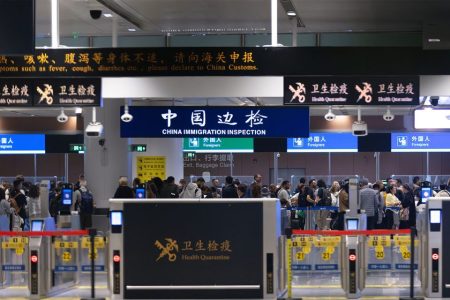Recent economic data paints a mixed picture in China. A revival in industrial profitability and pickup in consumer prices reflects the ongoing campaign to weed out aggressive price cuts, while contracting PMI figures incorporate ongoing tensions between Washington and Beijing. All of which is unfolding against a prolonged property slump.
The October trade report presents a different message. Topline exports contracted by one percent as shipments to the US continue to fall due in part from front-loading and seasonality. However, the decline signals a larger trend where relatively fewer Chinese goods are being sent to the US when incrementally more are heading to the Global South, a group of emerging markets that includes developing economies in Asia, Africa, Latin America, the Middle East, and parts of Oceania.
[See more: Macao risks falling behind as Sino-Brazilian relations deepen, panellists say]
As a percentage of China’s export profile, the Global South accounted for 44 percent of Chinese trade in 2024, ten percent more than a decade earlier. The upswing corresponds as shipments to G7 markets have trended lower, with the US now representing 15 percent of China’s export market, down from 20 percent ten years before, according to S&P Global research.
A growing number of Chinese firms are looking towards the Global South as trade cycles become increasingly prone to tariffs threats and supply chain disruptions, the rating agency argues, with early estimates suggesting that the bloc already compromises more than half of China’s trade surplus. Data also show a broader pivot, where a rising share of emerging market goods are being sent to other developing economies, with the intraregional exchange now worth about $5 trillion on annualised bases, writes Christopher Wood, equity strategist at Jefferies. He calculates China’s yearly G7 exports to have dropped from $960 billion from $1.6 trillion just three years prior.
Where the pushback lies

Amid the shift, deepening ties with the Global South are not without its own complications. Manufacturers have voiced concerns over displacement risks when cheaper Chinese imports compete with local markets. Factory capacity utilisation in Thailand has trended below 60 percent for the past two years, leading to a number of closures which corresponds to Chinese goods now accounting for a quarter of inbound trade, up from 13 percent in 2011, Wood describes.
But even as regulators raise security concerns or respond with countervailing duties, analysts observe that provided importing markets are not shielding national champions or politically sensitive sectors the bulk of Chinese imports are generally welcomed. A strong case can be made for domestically driven economies, comments Ismael Pili, head of institutional sales at Ho Chi Minh Securities Corporation, speaking to Macao News, noting that low input costs are margin accretive for downstream exporters.
[See more: The GBA is seeking closer trade ties with Vietnam]
China still accounts for a third of global manufacturing driven by its vast industrial capacity across both raw materials and finished goods. But as multinational supply chains become more efficient, they also become more vulnerable to external shocks, especially as Washington is looking to impose transhipment tariffs up to 40 percent. For trade heavy Global South economies, China accounts for almost a fifth of their country’s gross domestic product, and would directly mirror the slowdown in global trade.
Morgan Stanley has already flagged sequential harbingers of a broad based decline. The investment firm expects Asia’s overall export growth to slow, particularly in economies that have compensated the drop from the US, such as the ASEAN economies, which rose just 11 percent in October, a dip from the 23 percent growth seen in August.
For the meantime, Beijing is strategically reaffirming its intention towards broadening its cooperation and financial ties with the Global South, explains Jefferies’ Wood. The message was reiterated during October’s Fourth Plenum, underscoring China’s push for multilateralism at a time when Washington is demonstrating a preference for bilateral deals.






